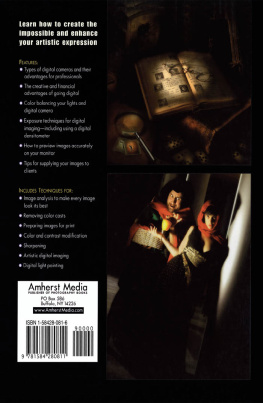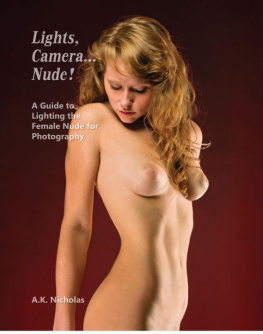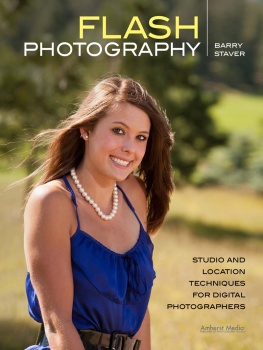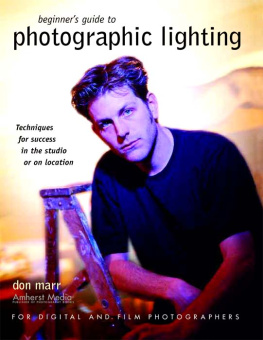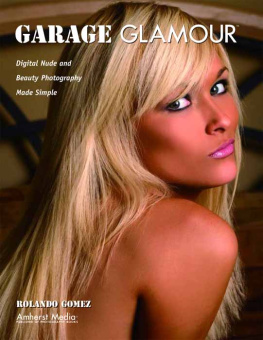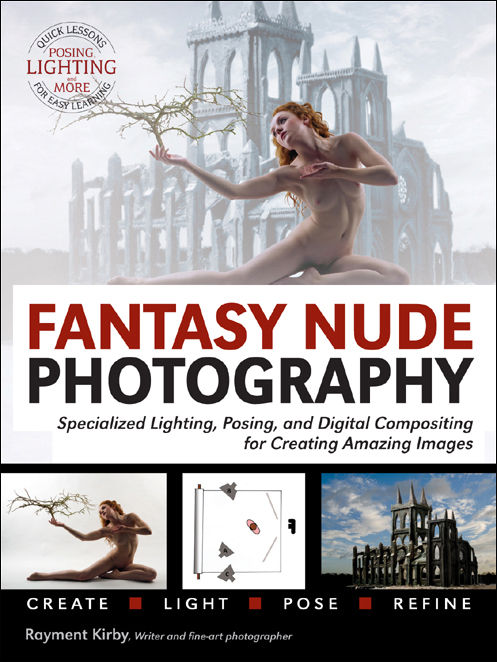
About the Author
Rayment Kirby started as a photographer in the Royal Air Force. He worked in the photographic fields of processing, food, fashion, and advertising. He worked in his own London studio in the fashion, advertising, book publishing, and music industries. Having partnered in a picture library, he has also written articles and books for the photographic press.
More recently, his interest in the art nude genre has been rekindled and enhanced by his work with the computer. His digital expertise has enabled him to incorporate the fantasy element he enjoys.
Copyright 2014 by Rayment Kirby.
All rights reserved.
All photographs by the author unless otherwise noted.
Published by:
Amherst Media, Inc.
P.O. Box 586
Buffalo, N.Y. 14226
Fax: 716-874-4508
www.AmherstMedia.com
Publisher: Craig Alesse
Senior Editor/Production Manager: Michelle Perkins
Associate Editors: Barbara A. Lynch-Johnt, Beth Alesse
Editorial Assistance from: Carey A. Miller, Sally Jarzab, John S. Loder
Associate Publisher: Kate Neaverth
Business Manager: Adam Richards
Warehouse and Fulfillment Manager: Roger Singo
ISBN-13: 978-1-60895-708-8
Library of Congress Control Number: 2013952497
10 9 8 7 6 5 4 3 2 1
No part of this publication may be reproduced, stored, or transmitted in any form or by any means, electronic, mechanical, photocopied, recorded or otherwise, without prior written consent from the publisher.
Notice of Disclaimer: The information contained in this book is based on the authors experience and opinions. The author and publisher will not be held liable for the use or misuse of the information in this book.
Check out Amherst Medias blogs at:
http://portrait-photographer.blogspot.com/
http://weddingphotographer-amherstmedia.blogspot.com/
Table of Contents


M y first art nude photograph was exhibited in 1958 at the London Royal Photographic Societys autumn exhibition. Ever since then, whenever time allowed from my photographic career, I have continued to make pictures of the female form. With very few exceptions, the pictures here were taken during the last four years.
My Philosophy
I have always been interested in creating fantasy images and employing whatever means needed to achieve them.
My philosophy on picture taking is that, provided you own a camera that produces pleasing results, it is not necessary to work in lavishly equipped studios or on far-flung locations. So much can be achieved with more modest facilities and equipment.
Most of my work is done in small studios using a maximum of four small studio strobe lights. Outdoors, things are even simpler; I use an occasional flash fill and reflectors.
All the pictures in this collection were made using uncomplicated lighting plans and only modest computer postproduction. I do, however, experiment with different ways of using my lightsand here you will find details of the devices I have made to do this. I believe the final picture is more important than the way it is produced.
The final picture is more important than the way it is produced.
Even before the current digital age, I constantly explored ways to introduce extra elements to my pictures or give them a suggestion of fantasy. The computer has provided me with a solution to most of these efforts. These images are a record of the way I work.

Away from the Studio
Sometimes, it can make a difference to get out of the studio to shoot nude pictures. When you look for indoor locations, the reason you may be attracted to a particular setting is either due to the place, the natural lighting, or both. If you plan to take photographs there, introducing additional lighting can sometimes destroy the settings charm or atmosphere.
I felt this about the location used for this picture. These images were shot in an attic. Because of the quirky nature of this room, it seemed an interesting place to work. The shapes of the ceiling and the wooden timbers would provide the model with features she could use to generate a number of different poses. However good your model is, it can help her to have features like this to work with, as it can bring more variety to the finished results.
Be Flexible! The original idea was to have the model standing, but as the shoot progressed, I decided to use the bed in the background as a prop. This helped her try an even greater range of poses.

Lighting and Setup
The day of the shoot was dull and overcast, so the light strength was at a premium. To get the effect I was after, I needed to shoot with the cameras ISO rated at 1000. When you set your camera to a higher-than-normal ISO, do a test exposure to ensure the noise level and image quality is up to the needed standard.

The room was not large enough for conventional lighting, even if I had wanted it.

TECH SPECS > The camera used for this image was a Nikon D3 fitted with a 2870mm zoom lens. Most of the time I shot with it set at 35mm and an exposure of 
 second at f/5.6. The ISO was 1000.
second at f/5.6. The ISO was 1000.
The room was not large enough for conventional lighting, even if I had wanted it. The natural light coming through the small window (A) could be used to an advantage to light the girls body and yet throw other parts of the room into shadow. It worked like a diffused spotlight.

Natural Light
I wanted a picture of a woman standing in a doorway but I did not like the look of the brick archway and the hedge behind her. This background was a distraction. I photographed her using only the natural light from a hazy sun (B). The shadow side of her was filled with light bouncing back from a white reflector (A). In the pre-digital age, of course, nothing could be done about the parts of an image you did not likebut now, thanks to postproduction and Photoshop, everything has changed.
Altering the Look
I thought a shot of a harp, taken some time before for a record cover but never used, might improve the overall composition and add something extra to my picture. Its other advantage was that the harp, too, was shot through an open door. So elements of both images could be combined to produce a more cohesive whole.


